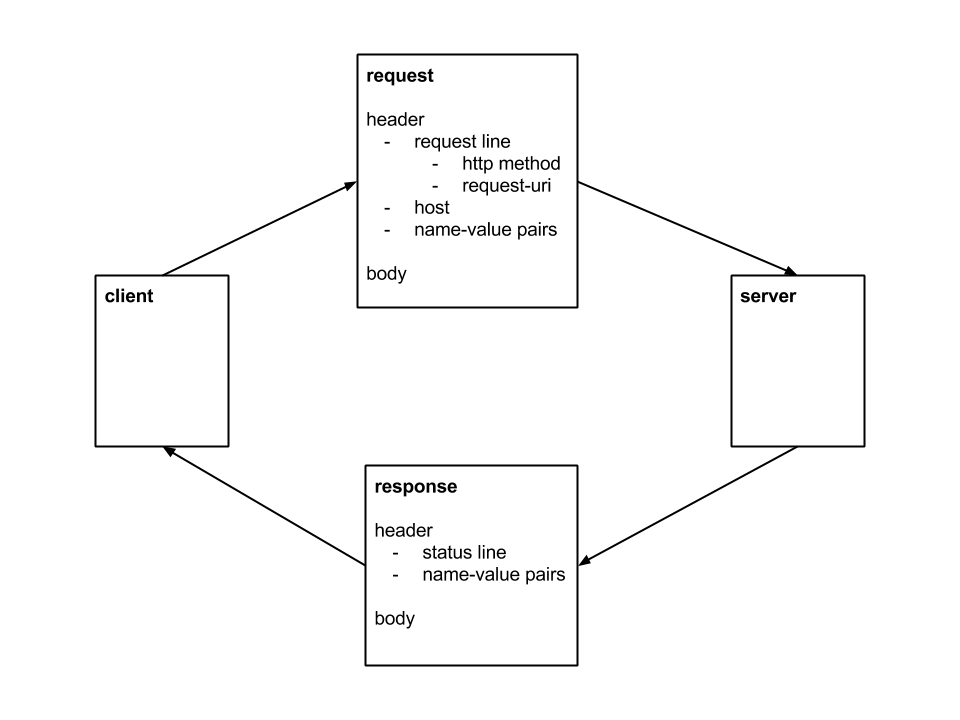HTTP Request Response Cycle
The request-response cycle begins with a client sending a request message to a server. The server handles the request and sends a response message back to the client. An HTTP message has a header and sometimes a body. The header contains meta-information about the message. The body contains the content.
Request
The request header consists of the request line, host, and name-value pairs (header fields). The request line contains the HTTP method and request-URI.
Header
GET / HTTP/1.1 Host: www.travisluong.com User-Agent: Mozilla/5.0 (Macintosh; Intel Mac OS X 10.9; rv:34.0) Gecko/20100101 Firefox/34.0 Accept: text/html,application/xhtml+xml,application/xml;q=0.9,*/*;q=0.8 Accept-Language: en-US,en;q=0.5 Accept-Encoding: gzip, deflate Connection: keep-alive Cache-Control: max-age=0
Response
The response header consists of a status line and name-value pairs. The status line provides a status code which tells you if the request was successful or not. There are many status codes with different meanings.
Header
HTTP/1.1 200 OK Date: Sat, 20 Dec 2014 08:17:22 GMT Server: Apache Cache-Control: max-age=3600 Expires: Sat, 20 Dec 2014 09:17:22 GMT Vary: User-Agent,Accept-Encoding Content-Type: text/html; charset=UTF-8
Body
<html> <head><title>Travis Luong</title></head> <body> <h1>Hello, World!</h1> <p>foo</p> </body> </html>
Sources
http://docstore.mik.ua/orelly/linux/cgi/ch02_02.htm
http://perl.plover.com/yak/presentation/samples/security/slide012.html
http://en.wikipedia.org/wiki/Hypertext_Transfer_Protocol
http://www.w3.org/Protocols/rfc2616/rfc2616.html
http://www.w3.org/Protocols/rfc2616/rfc2616-sec10.html
http://www.w3.org/Protocols/rfc2616/rfc2616-sec9.html
http://www.w3.org/Protocols/rfc2616/rfc2616-sec9.html
